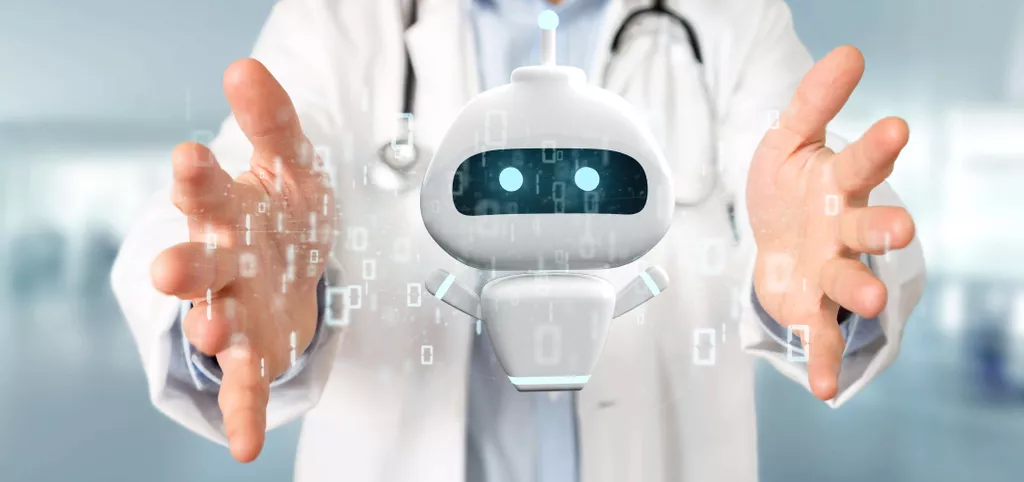Chatbots can extract patient information by asking simple questions such as their name, address, symptoms, current doctor, and insurance details. The chatbots then, through EDI, store this information in the medical facility database to facilitate patient admission, symptom tracking, doctor-patient communication, and medical record keeping. Chatbots ask patients about their current health issue, find matching physicians and dentists, provide available time slots, and can schedule, reschedule, and delete appointments for patients.
ChatGPT Continues to Prove Useful for Patient Education – PatientEngagementHIT.com
ChatGPT Continues to Prove Useful for Patient Education.
Posted: Thu, 18 May 2023 07:00:00 GMT [source]
AI chatbots can improve healthcare accessibility for patients who otherwise might not get it. While helping patients stay motivated to achieve their health objectives, they can spot people who require emergency medical care. Also, chatbots allow doctors access to all chat transcripts so that patients don’t metadialog.com have to repeat themselves. And patients may receive the care they require when they need it the most. A report from Juniper states that healthcare chatbots save approx $3.6 billion worldwide. Simply put, paying more staff for extra work will not be an issue when the healthcare industry integrates chatbots.
The crucial new role of automation in healthcare CX
Since it takes a lot to make a chatbot conversation as natural as feasible, a thorough understanding of intention and entity is necessary. A patient who lives in Dubai needs medical help for a fever; the entities must be “pharmacy,” “medicine,” and “Dubai.” Therefore entity identification is essential to develop a chatbot in healthcare industry. A chatbot should evaluate the data gathered regarding a user’s health issues and respond appropriately with helpful ideas. Also, while developing a healthcare AI chatbot, use natural language processing (NLP) to assist chatbots in determining the optimal response for each scenario. In addition, using medical informatics, the chatbot must be able to create the best reactions to communications concerning symptoms.

We perfectly understand struggles like that in our daily life, using chatbots, but often fail to incorporate solutions to them in our technology. And the solution for such a variety of how people talk, express themselves, and want to receive assistance is to acknowledge its inherent messiness. The process of developing an online chatbot for healthcare is a complex one and requires significant expertise in multiple areas. It involves understanding how humans communicate with each other through text, speech, pictures, and video.
Benefits of Healthcare Virtual Assistants
AI ChatBot’s (hereafter called “ChatBots” for simplicity) objective is to use any applicable technology in order to mimic the conversation among human beings, achieved by the NLP algorithms. Every day huge amounts of user-generated content are produced either in voice or text format. The categorization, clean-up, and insights processes are able to be streamlined with the help of NLP. Nomi is a voice assistant that creates a personalized and immersive (not to mention hands-free) experience in our vehicles.
The level of conversation and rapport-building at this stage for the medical professional to convince the patient could well overwhelm the saving of time and effort at the initial stages. As chatbots remove diagnostic opportunities from the physician’s field of work, training in diagnosis and patient communication may deteriorate in quality. This would save physical resources, manpower, money and effort while accomplishing screening efficiently. The chatbots can make recommendations for care options once the users enter their symptoms.
The Role of Artificial Intelligence
Furthermore, bots are able to connect healthcare professionals with the necessary data repository that meets their needs. Better informed patients and a proactive relationship with their provider leads to overall improved health, awareness, and streamlined service. They want a self-service option, and they want their interactions to be engaging and personal. The healthcare industry is no exception; patients have similar expectations of their healthcare provider as they do with other consumer sectors.
What is a medical bot?
Medical chatbots are AI-powered conversational solutions that help patients, insurance companies, and healthcare providers easily connect with each other. These bots can also play a critical role in making relevant healthcare information accessible to the right stakeholders, at the right time.
For example, when the Health Bot has to respond to the health condition intent question, “how am I today? The book appointment intent is used in order for the patient to be able to book an appointment with the doctor using free text. It collects all the necessary information regarding the doctor’s specialty, date, and time and proceeds with booking the appointment on behalf of the patient. Once this process is successfully completed, the response management component is triggered to fetch the appropriate response. “Healthcare is a 24/7 business, but not all aspects of healthcare are designed to be available to consumers all the time — so apps allow healthcare companies to extend their hours of service to their customers,” she says.
Smartphone applications for informal caregivers of chronically ill patients: a scoping review
Plus, they are available 24/7 so you can ask questions at your own convenience and be transferred to a live agent if needed. Conversational artificial intelligence (AI) in healthcare can bridge this gap. Virtual assistants are an amalgamation of AI that learns algorithms and natural language processing (NLP) to process the user’s inputs and generate a real-time response. Despite limitations in access to smartphones and 3G connectivity, our review highlights the growing use of chatbot apps in low- and middle-income countries. In such contexts, chatbots may fill a critical gap in access to health services. Additionally, such bots also play an important role in providing counselling and social support to individuals who might suffer from conditions that may be stigmatized or have a shortage of skilled healthcare providers.
- V. Manoj Kumar [10] has designed a search engine mechanism around the health context.
- They use the same conversation logic and facts across multiple other channels and can include voice, telephone automation and more.
- Conversational AI has primarily taken the form of advanced chatbots, or AI chatbots.
- Building a chatbot from scratch may cost you from US $48,000 to US $64,000.
- For many patients, visiting a doctor simply means a lack of control over the self while facing severe symptoms because of an underlying health problem.
- Also, you won’t have to keep making technological investments again and again to improve them.
Acquiring patient feedback is highly crucial for the improvement of healthcare services. Patients who are not engaged in their healthcare are three times as likely to have unmet medical needs and twice as likely to delay medical care than more motivated patients. Maybe for that reason, omnichannel engagement pharma is gaining more traction now than ever before.
4 BUOY HEALTH
That means they get help wherever they are without having to call or meet with a human. Let our team of experts show you how this chatbot solution can help you fully automate and personalize more interactions for members and agents with a single solution. Read more about the importance of a next-generation conversational AI solution and how Verint is leading the industry forward in this report from IDC.
Colombia Conversational Commerce Market Intelligence and Future … – GlobeNewswire
Colombia Conversational Commerce Market Intelligence and Future ….
Posted: Tue, 06 Jun 2023 08:58:49 GMT [source]
Welocalize develops high-quality conversational AI multilingual training data sets, so you can create conversational AI systems that understand text and speech in multiple languages. Adding multilingual support for conversational AI adds another layer of complexity. This is where a language service provider (LSP) with deep experience in conversational AI comes in. Patient engagement has been called the “blockbuster drug of the century.” Those actively engaged with their healthcare have better health outcomes.
How can chatbots help in healthcare?
NLP is the technology, that is, used to aid computers to understand human’s natural language. ChatBots, by using AI and ML algorithms, can heavily contribute to the patient’s interviewing process for the collection of health symptoms and the provisioning of self-care smart recommendations using well-trained ML models. By using telemedicine applications like ChatBots, patients have the ability to communicate from everywhere, provide their symptoms, and retrieve an improved diagnosis. In addition, healthcare professionals can have access to comprehensive and consolidated patient data. Also, the patient can easily book an appointment using human language via ChatBot.
What is conversational health?
conversationHEALTH (www.conversationhealth.com) enables the world's leading healthcare and life sciences companies to create AI-driven virtual experiences that exceed customer expectations.
